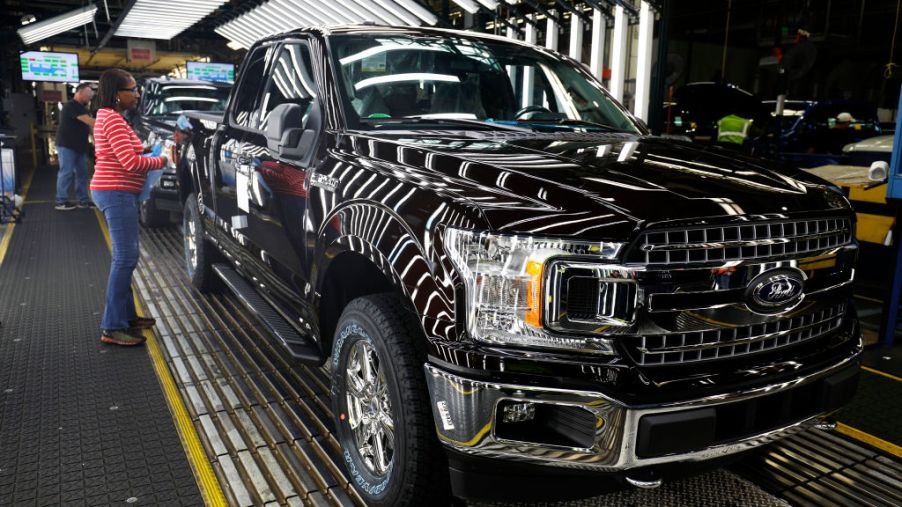
Which New Pickup Truck Has the Best Warranty?
When you’re purchasing a brand-new truck, the last thing on your mind is it breaking down or having a mechanical issue. After all, it’s a new truck! Many buyers don’t think twice about warranty offers on their new rides. But, this may end up being a costly oversight.
Today, we’ll uncover what you need to know about the various coverages before you buy a new pickup truck.
Powertrain warranties
Nearly all vehicles come with some protection from defects or damages to powertrain components. The powertrain umbrella typically covers the engine, transmission, and drive systems. Some powertrain warranties also offer complimentary towing services.
It’s also good to inquire about the transferability of any warranties, should you decide to sell your new truck before the terms expire.
Ford: Ford trucks offer 5-year/60,000 mile powertrain warranties on gas models. Their diesel models feature the 5-year/100,000 mile coverage.
Chevy: For new Chevy vehicles, expect the 5-year/60,000 mile powertrain warranty on gas models and 5-year/100,000 mile warranty on the diesels.
Dodge: Diesels come with a 5-year/100,000 mile Diesel Powertrain Limited Warranty while the gas pickups come with 5-year/60,000 Gas Powertrain Limited Warranty.
Bumper-to-bumper warranties
Often called the bumper-to-bumper warranty, the limited basic warranties are designed to protect buyers from defects or damages to components from the body to electrical systems.
Beware though; not all bumper-to-bumper warranties mean “roof to road” protection. It’s best to get a list of what systems are included before you decide.
Ford: The F-Series of trucks offers a 3-year/36,000 mile bumper-to-bumper warranty.
Chevy: Silverado comes with a 3-year/36,000 mile bumper to bumper warranty.
Dodge: Dodge trucks provide a 3-year/36,000 Basic Limited Warranty.
Roadside assistance warranties
Some warranties also include manufacturer-sponsored roadside assistance and towing. Should one of your warranty-covered parts fail and leave you stranded, this protection can pay for towing. Other service platforms offer this for help with a flat tire, dead battery, or empty gas tank.
Ford: Ford warranties provide roadside assistance for 5-years/60,000 miles, and includes towing and lockout protection.
Chevy: Chevy also offers roadside help within the ranges of the powertrain warranty coverages.
Dodge: Most all FCA US LLC vehicles come with a roadside assistance service as well.
Parts and accessories coverages
Depending on the type of truck you buy, there may be specialty or brand-specific warranties on individual components. You can search your truck brand for an in-depth list of additional or separate coverages. Or, you can look to the parts manufacturers for more information.
Ford: Ford offers a warranty on the Safety Restraint Systems for 5-year/60,000 miles. They also feature a perforation only, corrosion coverage for five years and unlimited miles.
Chevy: Chevy offers scheduled maintenance visits with purchases of new trucks. Some perks include the first visit within 1-year/12,000 miles.
Dodge: Some of the Dodge Mopar parts have separate coverages in addition to what may be provided in the basic, bumper-to-bumper warranty, or independent of those coverages.
Why warranties matter
In a perfect world, you won’t need to use your truck’s manufacturers warranty. But accidents and mistakes happen. Faulty parts sometimes get installed. If you don’t understand your warranty coverages and experience a significant failure on your truck, you could face thousands of dollars in replacements.
Often offered in the finance office as additional coverages, extended warranties can also be helpful to protect yourself and your investment. You can create a roof-to-pavement umbrella for yourself and even opt for gap insurance to help offset loan financing differences, should you get in a total-loss accident.
At first glance, it may seem like each truck maker offers similar warranty coverages. To identify which is best for you, ask your dealer for complete details on coverages, timelines, and expectations.
Additional manufacturer coverages may be available to you as well. Before you drive off the lot, have a contingency plan in place and understand your warranties. They may save your bank account someday.


